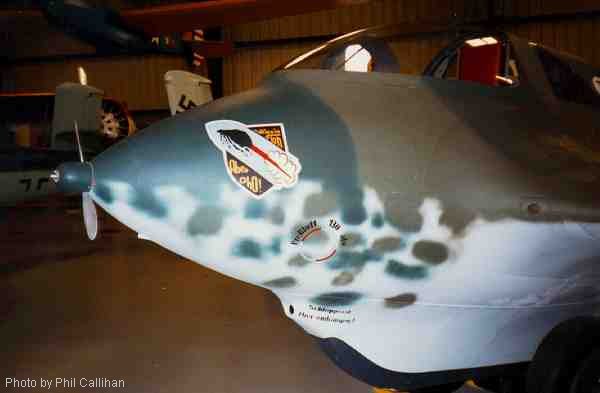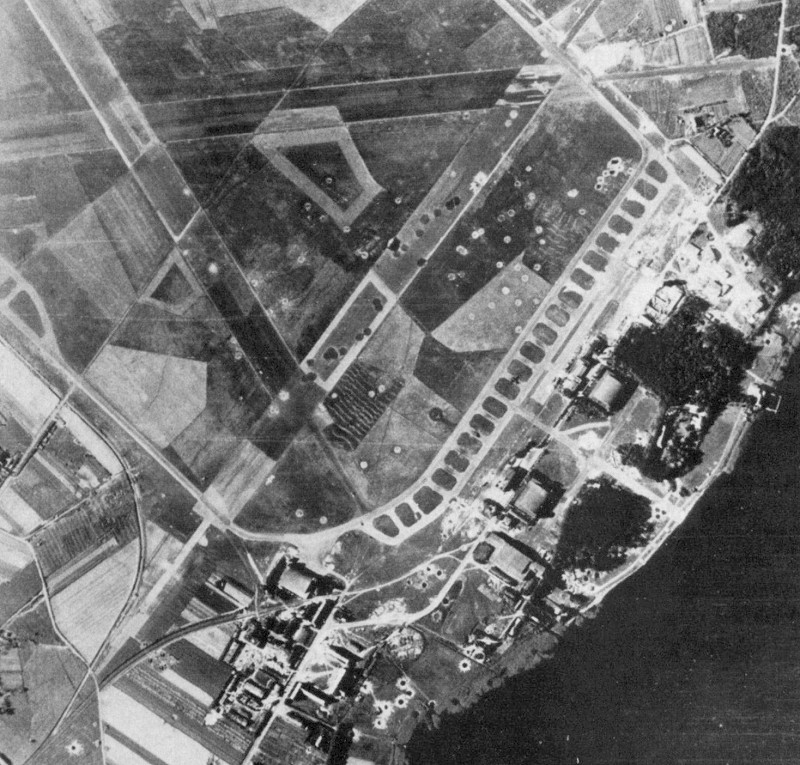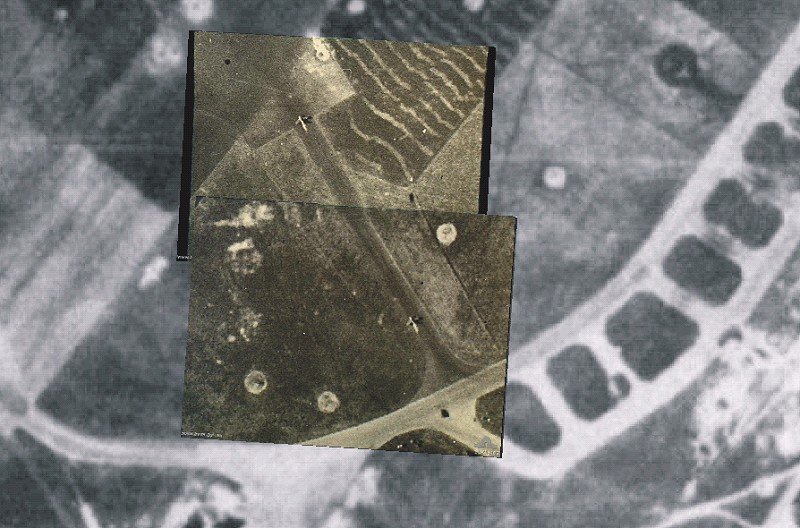
Me-163B - JG400 1945.

Me-163B - JG400 1945.

Me-163B - JG400 1945.

Me-163B - JG400 1945.

Me-163B - JG400 1945.

Me-163B - JG400 1945.



Me-163B - JG400 1945.

Me-163B - JG400 1945.

Me-163B - JG400 1945.

Me-163B - JG400 1945.

Me-163B - JG400 1945.

Me-163B - JG400 1945.

As always – truly fascinating and utterly comprehensive work of art, my dear Mr. Clave! Thank You for the pure joy I feel every time I look into your excellent work. 
Hahaha, I love that little thing… What purpose did the little propeller on the front serve?
The little propeller on the “power-egg’s” nose was meant to drive on the aircraft’s generator.
Oh… That makes… A little sense. I guess you need the generator to power the hydraulics to steer the darn thing…
I guess…but I also read that the propeller was needed for speed measuring.
That makes sense too.
Hi Claves,
very nice work, as usual…
I thought that you would do 1 Komet with the “rocket bug” insigna.:mrgreen:
I love that insigna!
I don’t remember which KG it was from. I’m sure someone here will know ?

The little prop powered the electrical generator.
On a normal jet or piston-engined aircraft a mechanical drive is taken to make the generator spin and provide electrics, but a rocket engine has no moving parts, so no drive… 
2. Staffel/Jagd-Geschwader 400
…btw, it’s a flea.
Looks interesting… any more pics of the rest of the aircraft?
could you do the “Spate’s RLM23 Tomato Red Komet”?

It is said that the maintenance crew did it as a joke but was promptly ordered by spate to get rid of the paint because of the extra weight…
Some more:



Not quite: in the Me.163 the propeller (more correctly, impellor) drives an electric generator which powers the radio, the Revi16B,C, or D reflector gunsight, the directionfinder, the mastercompass, the firing circuits of the cannons, and some of the lighting in the cockpit instrumentation.
There was an onboard lead/acid battery, but its’ capacity was limited, as was it’s endurance, no more than about 10 minutes or so, hence the fitted generator.
Speed measurement was an averaged function displayed on an airspeed indicator. This device averaged readings from two sources: The pitot tube on the leading edge of the port wing, and a small pitot inlet in the nose, just above the top edge of the underskid channel (you can see it as the small protuberance below the impellor, in the excellent illustrations: Note: the towing eye was in the top of the underskid channel, and should Not be confused for the fuselage pitot inlet). There was a further tapping-off of pressure-ducted air from the pitot tube which also provided the rate of climb indicator with its’ source.
Perhaps surprisingly, for all its’ technical demands, the Me.163 was rather undemanding, of electricity, unless it was also fitted with various specialist weapon systems such as the photocell-triggered vertical shell projectors or RM4 unguided rockets, in which case the generator was usually replaced by a more potent version.
Hope this is of some help.
Clave: Your art is truly magnificent. Well Done, Sir!
Regards, Uyraell.
Thanks for Spaate’s red komet  looks very nice, as always.
looks very nice, as always.
Speaking of the sights, I have heard that the Komet was too fast to actually aim at anything, so somebody had the bright idea to use photo-whatnots (I forgot the name, pardon me) so that the MK108s would fire when a bomber was in front.
Ja: this is almost so. 2/Jg 400 was issued with one, maybe two Jagdfaust 20 or Jadgfaust 30 - equipped Komets. The Photocells triggered those multi-barrel weapons, Not the MK108’s.
Apparently, Ekdo 163 had several successes with air-to-air firing tests, and the devices were then cleared for operational use, and used at least twice, though note: they fired 20mm or 30mm shells upwards into the targetted bomber.
The picture thereafter becomes a little unclear, as Eprobungskommando 163 was also in process of becoming Ekdo 263, because the Me.263 and 163D series were to be operationally tested, though only for a few weeks, as the basic operational parameters had already been established with the Me.163B.
A good source of information on flying the Komet is “Rocket Fighter” by Hermann Zeigler, published about 1976 or 1977.
In the above book, Zeigler states plainly that time for lining up the shot, fine aim, and firing pass was on the order of 2 or 3 seconds, even at “powered-off” (today we would say “throttled back”) speeds. This is using the 2x 30mm MK 108s.
Incidentally, the picture pf the replica Me.163B glider on the airfield almost looks convincing: any detail on the thing? Construction materials, where/when built, owned by whom, flown by whom?
Regards, Uyraell.
According to the book Der streng geheime Vogel Me 163 by Major Wolfgang Späte (ISBN-13: 978-3895551420) an accident happened on December 30, 1943 at the former Rostrup airforce base at Bad Zwischenahn.(nowadays a glider airfield, 1 minute walk from where i`m writing right now) A rocket piloted by Oberleutnant Josef Pöhs of Erprobungskommando 16 spun around during a skid landing and flipped, causing a fuel to rupture and the remaining T-stoff to spill into the pilot compartment.
From the accident investigation as recounted by Späte, who was commander of the airforce unit at the time of the incident:
"The medical officer continued with his precise, technical presentation, ‘After we recovered the wreckage, we attempted to put the pilot’s remains in a casket. Even though he was wearing a protective suit, his entire right arm had been dissolved by T-Agent. It simply wasn’t there. There was nothing more left in the sleeve. The other arm, as well as the head, was nothing more than a mass of soft, amorphous jelly.’ " At that point, Späte says he interrupted the doctor, telling him to just shut the hell up. He didn’t want the other pilots to become demoralised, because the H2O2 had done that to the victim in less than a minute’s time.
If you know how reactive and exothermic 3% hydrogen peroxide is when you apply it to a cut or wound, consider that the strength of the peroxide in the T-stoff was 98%.
here are two pics from that airfield, in the second you can see in the zoom 2 me163 taking off.

The description reads “Zwischenahn, Germany. C. 1944-10. A Messerschmitt Me163 “Komet” liquid rocket fighter aircraft photographed during take-off at Zwischenahn with a dense light-coloured exhaust trail issuing from its tail.”. The photos can be overlaid perfectly on the aerial photo shown above, and show the Komet taking of from runway 33. If you look closely, the Komet is also visible in the overall photo.

copyright rob debie
here you can see this red painted me163b glider in action :
http://www.dailymotion.com/video/x9hzyh_messerschmitt-163-komet_people
I am familiar in so far as is possible, with Joschi Pohs being dissolved alive.
Hermann Zeigler devotes two or three pages to the topic. Like wise, the unauthorised flight of an Me.163.B by Hanna Reitsch: subsequent to Spaete himself being hospitalised for 4 to six months as a result of an unfortunate landing, within the same year/12-month period -
as the Pohs incident.